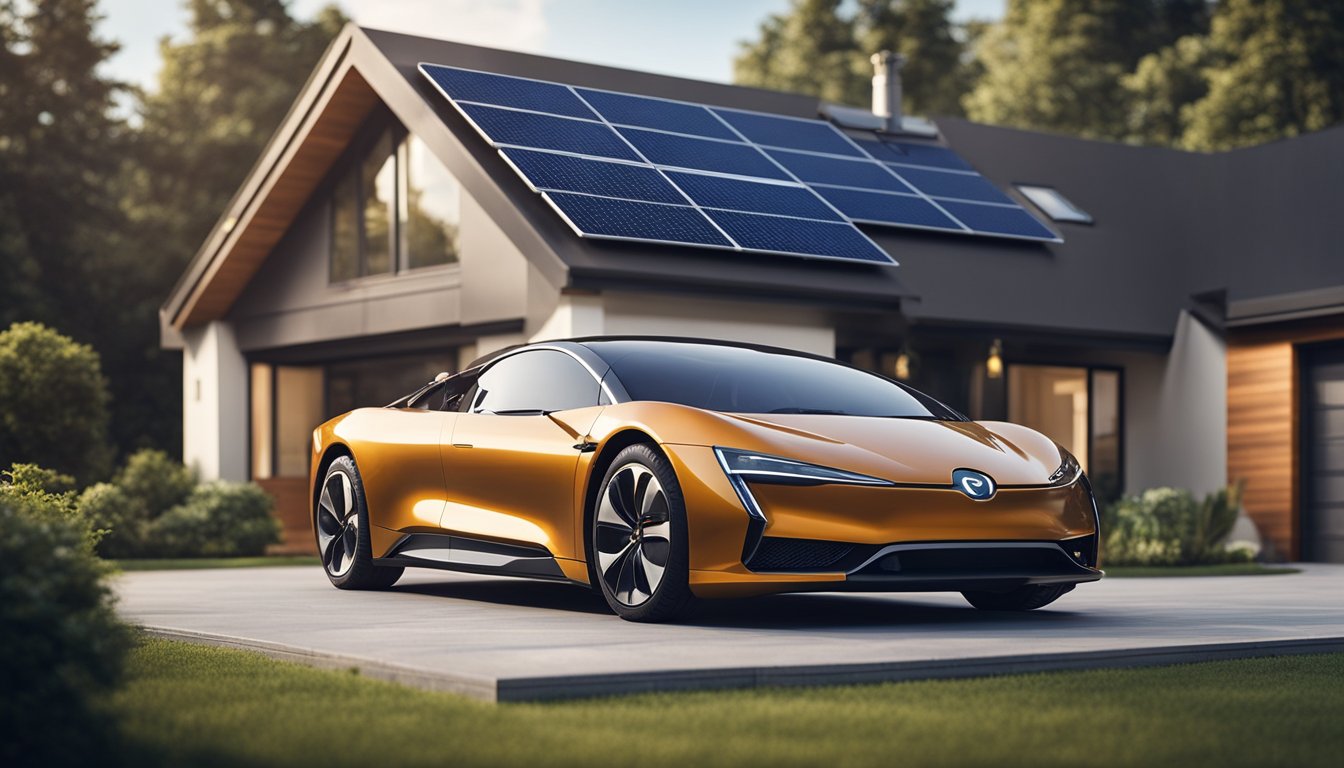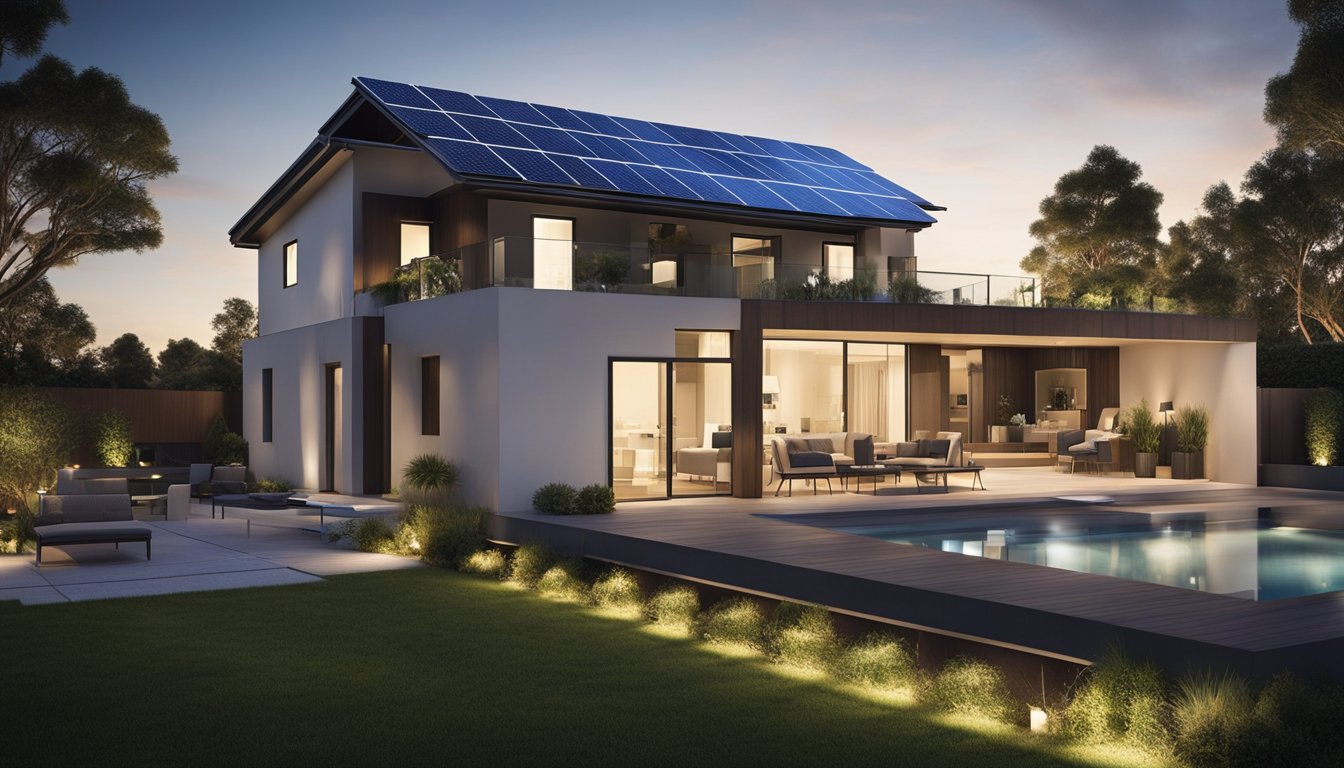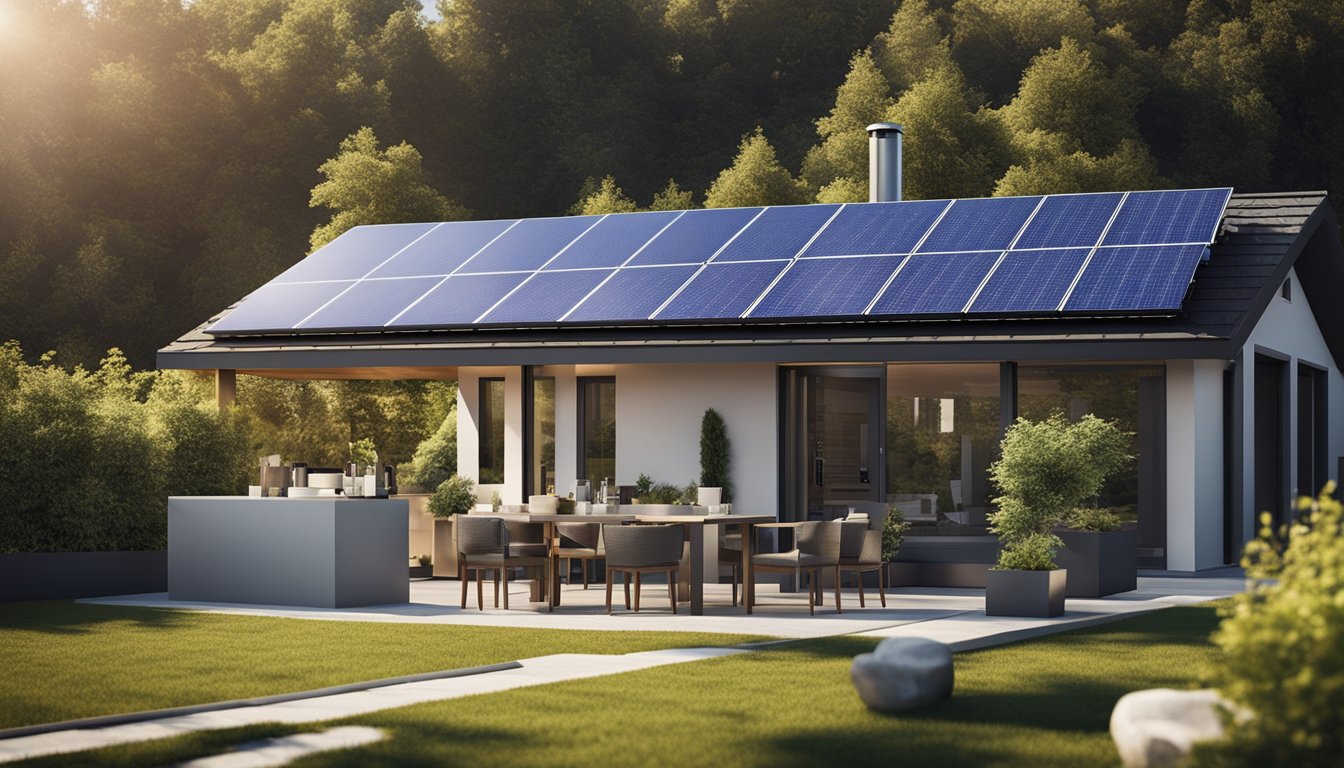Late updated: 17 Jan 2025 14:01
Written by: Eleanor Hartman
Future-Proofing Your Home With Energy Innovations: Essential Tips for 2025
As we step into 2025, the idea of future-proofing our homes with cutting-edge energy innovations is more compelling than ever. Rapid advances in technology give us the tools to not only enhance our quality of life but also contribute meaningfully to combating climate change. Harnessing the power of renewable energy sources and smart technologies, we can transform our living spaces into efficient and adaptable environments.

Homeowners are increasingly adopting strategies that optimise energy consumption, embedding solar panels, advanced batteries and energy-efficient appliances. These innovations not only slash utility bills but also ensure a reliable power supply during outages, ultimately raising the home's resilience against external pressures.
Incorporating smart technologies has become a game-changer in the way we interact with our homes. We can now integrate advanced automation and security systems, making our daily routines more convenient and our homes more secure. As we dive deeper into this topic, we'll explore the innovations shaping our homes and how we can embrace these changes for a brighter, more sustainable future.
Key Takeaways
- Renewable energy reduces costs and boosts home resilience.
- Smart technologies enhance convenience and security.
- Energy innovations support sustainable living.
Maximising Energy Efficiency in the Home
With energy costs on the rise and increasing concerns about environmental impact, maximising energy efficiency at home is more important than ever. By leveraging advancements in technology and embracing renewable energy sources, we can significantly reduce our energy consumption and bills.
Harnessing Solar Energy: Installation and Benefits
Solar panels have become a cornerstone of energy-efficient homes. By converting sunlight into electricity, solar energy systems provide a renewable power source that reduces dependence on the grid. Initial installation costs can be moderate, but governments often offer incentives to offset expenses.
Installing solar arrays on rooftops not only decreases energy bills but can also generate income through surplus energy credits. We can even utilise this energy to charge electric vehicles, further enhancing savings. Integrating solar power with battery storage systems increases energy resilience, allowing stored energy to be used whenever needed.
Advancements in Home Insulation and Building Materials
Improving insulation and selecting advanced building materials are critical for conserving energy within a home. Effective energy usage is enhanced by insulating attics, walls, and floors, which curtail heat loss during colder months.
Materials such as insulated concrete forms and triple-glazed windows contribute significantly to home efficiency. They maintain indoor temperature, alleviating strain on heating and cooling systems. Let’s also consider reflective roofing materials that repel heat in summer, further reducing energy consumption. These technologies not only cut down on energy bills but also improve indoor comfort levels significantly.
Optimising LED Lighting and Energy Star Products
Switching to LED lighting is a simple yet effective way to enhance energy efficiency. LEDs consume significantly less electricity than traditional bulbs and have a much longer lifespan. They are available in various brightness levels and colour temperatures, suitable for any setting.
Energy Star-rated products also contribute significantly to reducing energy consumption. By ensuring that appliances like refrigerators, washing machines, and dishwashers meet high energy standards, we can achieve substantial energy savings. These products are designed to perform efficiently using less water and electricity, making them essential for any modern, energy-conscious home.
Integrating Smart Home Systems for Peak Performance
Smart home technology offers refined control over household energy use. Smart thermostats optimise heating and cooling by adjusting to our schedules, ensuring energy is used only when needed. Water conservation systems also play a role, monitoring and reducing water usage through smart devices.
Integrating smart home hubs provides seamless control over lighting, security, and energy management systems. These technologies allow us to monitor energy usage patterns and identify areas for improvement. By incorporating smart energy solutions, we enhance convenience, security, and energy efficiency, contributing to overall sustainability at home.
Innovative Home Automation and Security

In the evolving landscape of home automation and security, technology offers remarkable features enhancing convenience, safety, and energy efficiency. Smart home systems have revolutionised how we manage our living spaces, providing intuitive control and increased property value.
Emerging Smart Home Solutions and Their Impact
Smart home solutions are transforming the way we interact with our living environments. Internet of Things (IoT) devices enable seamless communication between appliances, offering unparalleled control and energy management. As a result, homebuyers are increasingly attracted to these systems, which promise scalability and the potential for higher property value.
Integrating home automation systems can also significantly reduce our carbon footprint. Devices such as automated lighting and thermostats optimise energy usage, contributing to an eco-friendly lifestyle.
The Role of Home Automation in Living Spaces
Home automation systems enhance the comfort and functionality of living spaces. By automating regular tasks such as lighting adjustments and scheduling appliances, we create an environment that maximises well-being and efficiency. Smart technology allows personalisation based on our daily routines and preferences.
The adoption of smart home installations also facilitates energy storage and efficient energy usage. By employing these technologies, we ensure our homes are adaptive and responsive, capable of handling future technological advancements effortlessly.
The Future of Home Security: Advanced Features and Reliability
Advanced security systems are at the forefront of modern home innovation. Features like facial recognition and remote monitoring provide enhanced security and peace of mind. These smart security systems can discern family members from intruders, offering a level of reliability previously unseen.
Investing in professional installation for these systems ensures optimal performance and functionality. Such advanced security features not only protect our homes but also contribute to an increase in property value, making them an attractive option for homeowners.
Intuitive Control with Smart Home Assistants
Our interaction with home automation technology is simplified through smart home assistants such as Amazon Alexa, Google Home, and Apple HomeKit. These systems provide intuitive control over various devices, ensuring seamless operation with voice commands and app interfaces.
By leveraging these technologies, we can efficiently manage our homes from anywhere, enhancing convenience and integrating all smart home systems into a cohesive unit. This level of intuitive control is essential for maintaining a technologically advanced living environment.
Investing in EV Charging Stations for Modern Homes
The integration of EV charging stations is becoming essential for future-ready homes. As electric vehicles (EVs) gain popularity, the demand for home-based charging solutions rises. By installing EV charging facilities, homeowners not only improve their convenience but also contribute to reducing societal reliance on fossil fuels.
Adding such features to our homes can also lead to an increased property value. As more homebuyers consider the ecological impact of their purchases, EV charging stations represent a significant investment in sustainable living.
Frequently Asked Questions

In this section, we address common queries regarding strategies to future-proof homes through innovative energy solutions. Exploring energy efficiency improvements and renewable technologies can significantly reduce energy costs and enhance sustainability. Smart home systems, effective insulation, and energy storage systems contribute to a home's resilience and self-sufficiency.
What steps can be taken to enhance energy efficiency in existing homes?
We can improve energy efficiency by upgrading insulation, sealing leaks, and replacing outdated appliances with energy-efficient models. Installing smart thermostats and LED lighting also helps reduce energy consumption significantly.
Which renewable energy technologies are best suited for residential properties?
Solar panels are a popular choice, offering reliability and reduced grid dependency. Wind turbines and geothermal systems are other viable options, depending on local climate and site conditions.
How can smart home systems contribute to a home's energy resilience?
Smart home systems provide real-time energy usage data, helping us optimise energy consumption. Automated controls for heating, lighting, and appliances allow for efficient energy management and adaptability to changing needs.
What are the most cost-effective insulation practices for reducing energy usage in a home?
We can improve insulation by adding cavity wall insulation, upgrading loft insulation, and using double or triple-glazed windows. These practices help retain heat, cutting down on heating costs.
How does integrating energy storage systems improve a home's self-sufficiency?
Energy storage systems, like home batteries, store excess energy generated from renewables. This stored energy can be used during peak hours or outages, ensuring a continuous power supply and reducing reliance on the grid.
What are the latest advancements in energy-efficient home design?
Recent advancements include passive house designs that minimise energy use through orientation and materials. Innovations in smart windows and sustainable building materials enhance overall efficiency and climate adaptability.